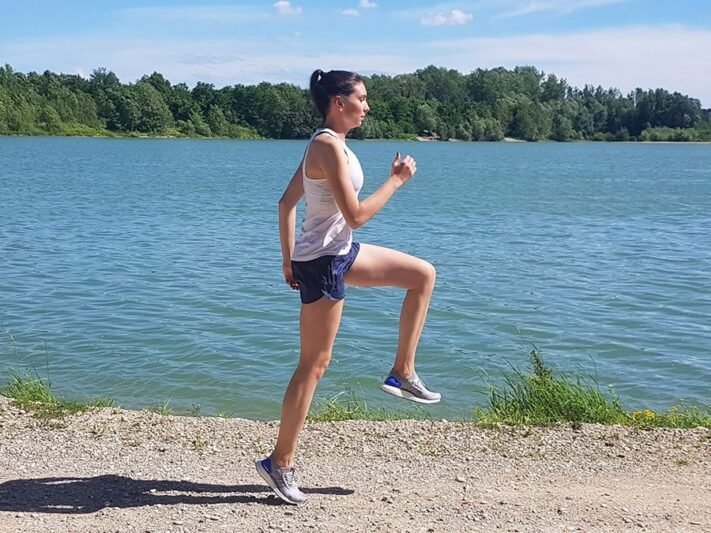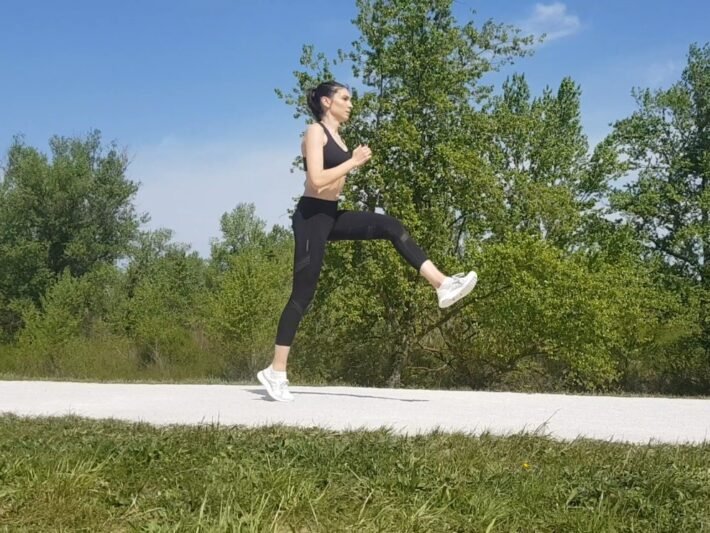Why Running Drills Are Important? (9 Benefits For Runners)
You have certainly asked yourself:
- Why should I do running drills?
- Why running drills are important?
In the following article, you can read more about all the running drills benefits.
Running drills benefits
Running drills are methodical exercises that imitate running movements. By mastering these exercises proper running motions become automatic which then improves your running technique.
Other than for improving running technique, they are also used as part of warm-up routines before more challenging races or training since they prepare you for a faster run.
Due to their numerous advantages, running drills are used not only by runners but also by athletes in other sports.

1. Used as part of a warm-up before more intensive training or races
Warming up is a process that gradually raises your body temperature so that you are physically and mentally prepared for the upcoming exertion during the main part of your training or race.
It is important to adapt your warm-up to the activity. Before more intensive training and races a warm-up routine should include running drills.
Read more: Warm-up Before Running [Ultimate Guide]
2. Improve technique and running economy
Running drills teach you proper posture and foot placement during a run, as well as to raise your knees higher. The foot should be bent towards the shin, in the position of dorsiflexion. Dorsiflexion enables the activation of calf muscles. As you hit the ground the calf muscles will contract, allowing you to hit the ground with more force.
By improving your running technique, you will also improve your running economy. In other words, you will run faster while spending less energy.
3. Increase cadence
Running drills are exercises that teach you not to overstride and to avoid running over your heels. It helps you develop proper running technique, teaching you to hit the ground right below you. This way you keep the momentum and avoid the slowdown while increasing the cadence (number of steps in a minute).
Research has shown that increasing cadence by 10% reduces the stress on your knees by 5%. This reduces the risk of usual runner injuries, such as hip or knee injuries.
4. Reduce contact with the ground
Most running drills are performed on the balls of your feet. They teach you to run on the balls of your feet so that you can develop the strength necessary to push off the ground with more force. Running on the balls of your feet reduces the time spent in contact with the ground, which makes your run faster.
In 2007 scientists from the Ryukoku University in Japan set up a high-tech camera on the 15-kilometer-section of the half marathon and used it to record 283 runners. Research has shown that an average midfoot striker spends 183 milliseconds in contact with the ground, while an average heel striker spends 200 milliseconds in contact with the ground. Shorter time of contact results in a faster run and higher running economy.
5. Improve neuromuscular effectiveness
Running drills improve communication between nerves and muscles by quickening nerve impulses that send signals to muscle fibers. As a result, your muscles will have better coordination in more intensive training or race.

6. Strengthen hip flexor muscles, core, and leg muscles
Running drills allow you to control your movements by strengthening hip flexor muscles, core, and leg muscles.
Hip flexor muscles allow you to raise your knees up to your chest, as well as bend your upper body forward. Many runners stretch hip flexor muscles, forgetting that it is just as important to strengthen them.
Research has shown that weaker hip flexor muscles lead to injuries. Injuries happen not only because we forget to strengthen our hip flexor muscles, but also because we weaken and shorten them through everyday actions.
A strong core allows you to control running movements and it makes your body more stable. It ensures the force from the swings of your arms is properly transferred to your legs, thus improving your running economy.
Leg muscles are among the key muscles for running. The stronger the leg muscles the more energy you can produce and the faster you can run.
7. Help you lose weight
Running drills, such as high knees or butt kicks, are used in other sports besides running. They are high-intensity exercises that burn a high number of calories. It is used in fitness training as a separate exercise performed in repetitions lasting several minutes.
Info
A person of 155 pounds will lose approximately 6-9 calories after a minute of high knees.
8. Improve the cardiovascular condition
Running drills increase the blood flow in your muscles, thus raising muscle temperature. At higher temperatures, hemoglobin in erythrocytes releases oxygen more quickly (Bohr effect). This means that you will be able to handle more exertion because your blood and oxygen have an easier time traveling through your organism.
Research has shown that proper warm-up results in a 2-3% increase in body temperature, lasting 45 minutes. The increase in temperature causes useful changes in muscles and tendons:
- Significantly increases muscle elasticity and allows higher-intensity training.
- Muscles and tendons become more flexible which makes stretching muscles and tendons easier and more effective.
- A rise in enzymes and metabolic activity improves the effectiveness of muscle contractions.
9. No equipment is required
Running drills can be done regardless of your location since you do not require any additional equipment, nor do you have to pay for an expensive gym membership.
How to benefit the most from running drills?
Running drills have to be performed properly to fully benefit from them.
To have a better focus on proper execution of the drills, do them when you are rested, before the main part of your training or race, or after an easy training. If you are not doing running drills properly, you will ruin your running technique and increase the risk of injury.
It is advisable to do running drills while being watched by the coach. If that is not an option, then ask another runner to observe you or record yourself so that you can see whether you are performing the exercise properly.
Running drills require skill and are not easy to master, so be persistent while learning how to do them. Start with easier and simpler exercises, slowly moving up to the more complex ones.
Simpler running drills
Complex running drills
Read more: Top 8 Running Drills To Improve Your Form [Video]

Matea Matošević
Hi, I’m Matea! I’m an Olympic Marathon Runner, founder, and writer behind OLYRUN.com. On this site, I provide help in the form of my knowledge and experience to all who love running and active living. Read more…

